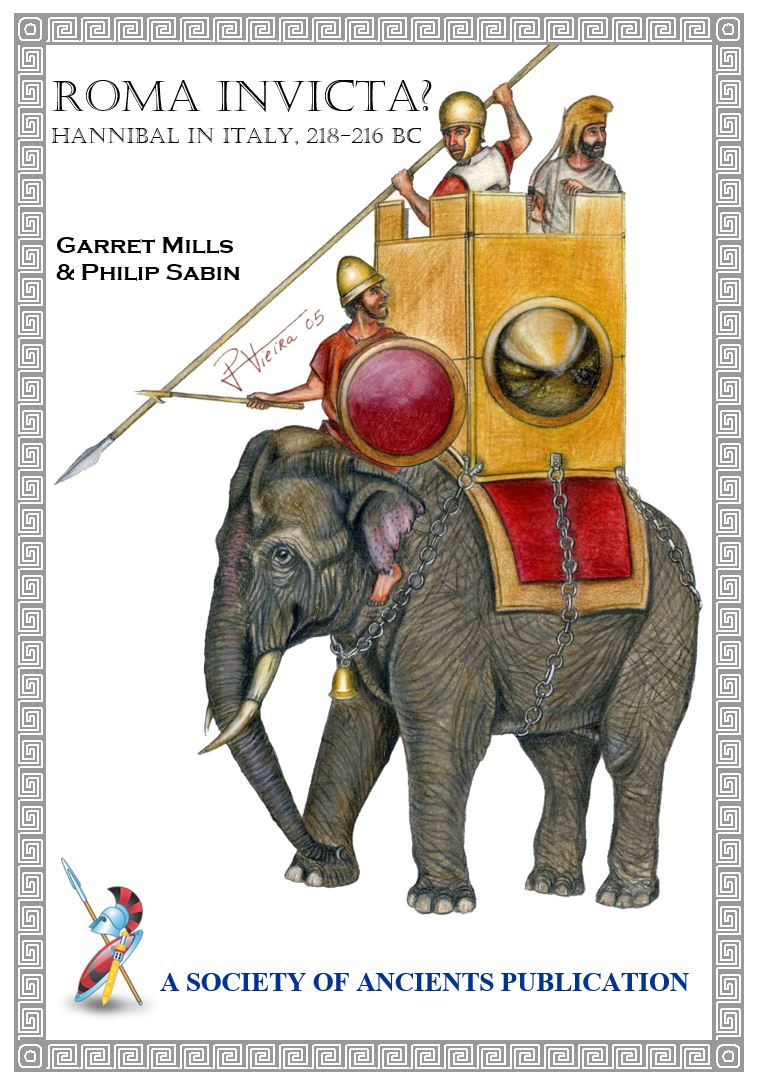 |
Roma Invicta?£9The 2008 bonus game. A simulation game of the first two years of Hannibal's Italian campaign during the Second Punic War, designed by by Garrett Mills and Professor Philip Sabin. |
Roma Invicta? is a simulation game of the first two years of Hannibal's Italian campaign (autumn 218 to autumn 216 BC) during the Second Punic War. Historically, this period encompassed the Carthaginian victories at the Rivers Ticinus and Trebia, the classic ambush at Lake Trasimene, the frustrating 'delaying tactics' adopted by Fabius, the annihilation of a massive Roman army at Cannae, and the failure of Hannibal to convert this crushing battlefield triumph into a strategic victory over Rome. The game thus covers one of the most famous and dramatic two years of campaigns in the whole of ancient warfare.
The accent throughout is on simplicity, accessibility and speed of play, while still providing a faithful simulation of the complex strategic dynamics which shaped the actual campaigns. Play is highly interactive, with each side having 26 alternating two week rounds plus two winter phases. Hannibal enjoys massive tactical advantages through his own generalship and his large numbers of cavalry, and so can often annihilate entire Roman armies through ambush or encirclement. The Romans benefit from a growing flood of reinforcements and from the ability to avoid battle by sheltering behind fortifications, but if they let Hannibal ravage their lands without challenge, the resulting demoralisation will quickly destroy the Roman confederacy. Play therefore revolves around a careful balancing of military and prestige losses, as the Romans trade troops for time until they learn sufficient caution to bog Hannibal down in an attritional stalemate as happened historically after Cannae.
Roma Invicta? was designed at King's College London by Garrett Mills and Professor Philip Sabin, whose recent books include Lost Battles: Reconstructing the Great Clashes of the Ancient World and also the two volume Cambridge History of Greek and Roman Warfare. It comes in a zip-loc bag, and includes a 17" x 24" game map, 36 full colour ¾" counters printed on stiff card, and a fully illustrated 20 page A4 rulebook including colour ready reference charts, an extended example of play covering the whole first 12 months of the campaign, and extensive designers' notes. The game plays equally well with two competing players or as a solitaire vehicle for one person to study and experience the strategic dynamics and dilemmas involved.

